Results
-
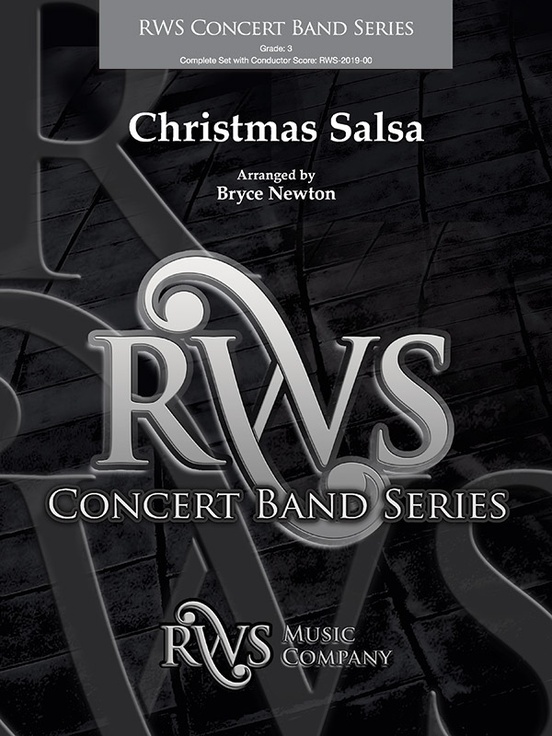 £73.50
£73.50Christmas Salsa
Bryce Newton's holiday work is the perfect choice to add interest and variety to your holiday program. Combining themes from Here We Come a-Caroling and Angels We Have Heard on High, this piece is carefully crafted in a fun salsa style that your musicians will love to play. Very accessible in limited rehearsal time, Christmas Salsa will bring wonderful energy and excitement to your holiday concert or assembly.Original Item#: RWS-2019-00
Estimated dispatch 3-5 working days
-
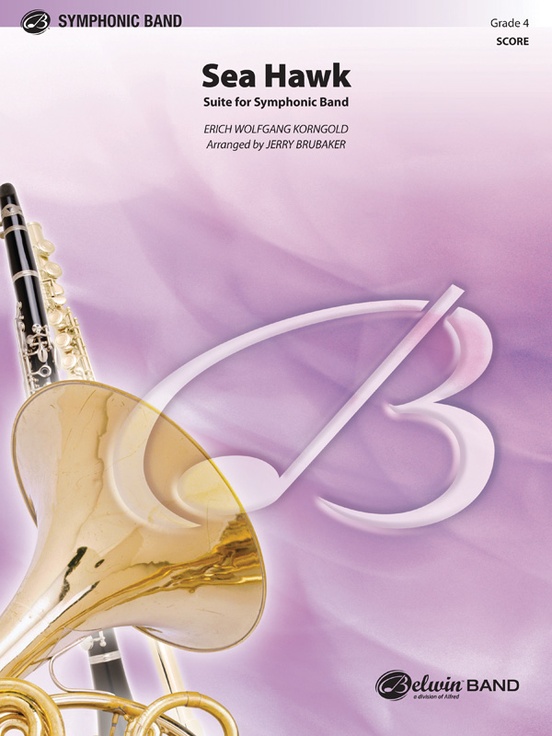 £84.50
£84.50Sea Hawk - Erich Wolfgang Korngold / arr. Jerry Brubaker
Erich Korngold's score to the , written in 1940, plays more like a symphony than a soundtrack. Jerry Brubaker has created a picturesque suite for symphonic band of several of the majestic themes from this marvelous score.
Estimated dispatch 3-5 working days
-
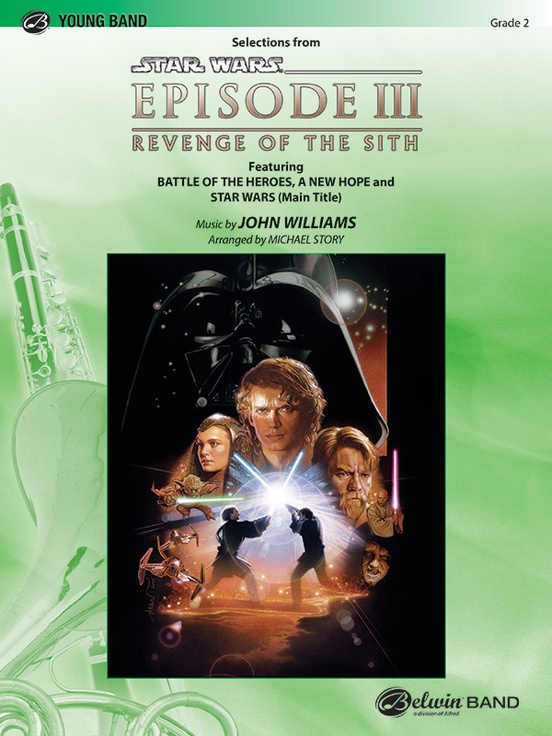 £70.50
£70.50: Episode III - John Williams / arr. Michael Story
This vivid collection of themes from the blockbuster John Williams film score include: "Battle of the Heroes," "A New Hope" and "Star Wars (Main Title)." All the excitement is jam-packed into one young band medley. (4:23)
Estimated dispatch 3-5 working days
-
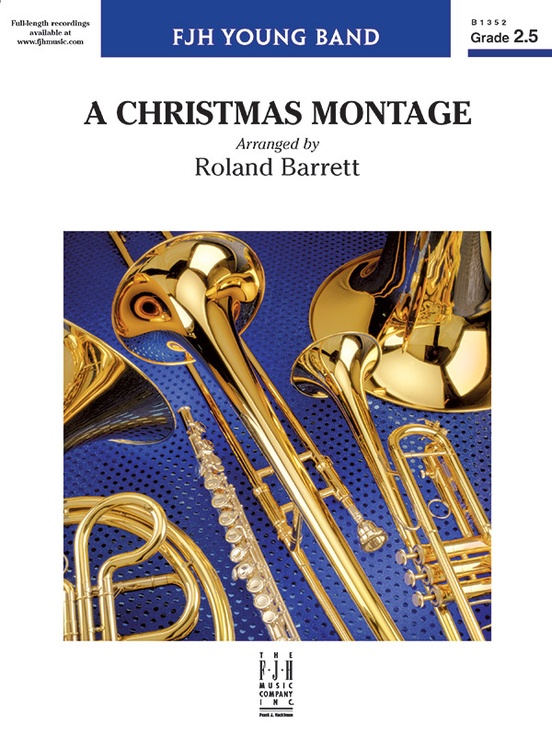 £53.95
£53.95A Christmas Montage
This powerful arrangement combines the bold, aggressive writing of Roland Barrett with the sounds of the holidays. Selections include Good King Wenceslas, Angels We Have Heard on High, and Carol of the Bells. As the work comes to a close, themes from God Rest Ye Merry, Gentlemen are weaved into Carol of the Bells before the work accelerates to a thrilling finish. A wonderful symphonic arrangement for your next holiday program!
Estimated dispatch 3-5 working days
-
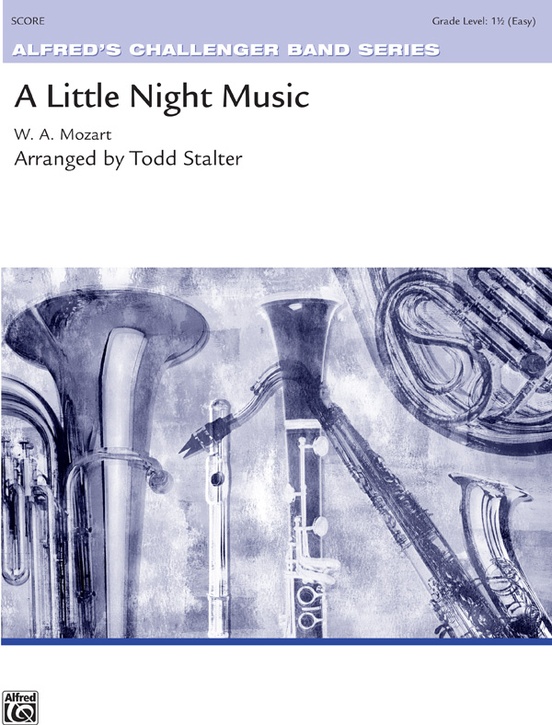 £48.95
£48.95A Little Night Music - Wolfgang Amadeus Mozart / arr. Todd Stalter
Mozart's Serenade No. 13 for strings in G Major, K. 525 is commonly referred to as "Eine Kleine Nachtmusik," which stands for "a little serenade," but is more familiar to music lovers as "a little night music." This arrangement uses themes from the first movement, and is cast in a comfortable key and range for young band musicians. Careful attention to the sudden, extreme dynamic changes will make the performance of this piece really come to life.
Estimated dispatch 3-5 working days
-
£184.99
Rubicon - Bert Appermont
The Rubicon is a river in Northern Italy which Julius Caesar crossed with his army in 49 BC in defiance of the leaders of Rome, who feared his power. A civil war against rival Pompey ensued, which culminated in Caesar seizing power as the absoluteruler of Rome. The phrase "crossing the Rubicon" therefore refers to any person committing himself irrevocably to a risky, decisive and irrevocable of course of action.The work consists of three parts that deal with this important moment in history.Part 1 (Meditation) symbolises Caesars request to the Gods to assist him in his difficult choice. In a slow introduction we hear the melancholy and beseeching sounds of the duduk (alternatively, this part can be played by a soprano saxophone)and of the soprano solo singer over the bourdon accompaniment. The soprano solo singer then sings "dona tibi pacem" (give him rest) in a melodious and probing theme.In Part 2 (Battle of Pharsalus) trumpets and trombones resound alternately ina stately Roman fanfare, producing a stereophonic effect. This develops into a martial theme in which Caesars impressive army goes to battle against the army of rival Pompey. While the theme of Caesars army fades away, Pompeys theme emerges as anaive dance in six-eight time. His army is definitely in the majority and it believes it can easily defeat the enemy. Suddenly trumpets and trombones clash on two sides of the orchestra: Caesars army advances and attacks. A fierce battle ensues inwhich the two themes are played alternately as well as simultaneously. Thanks to his shrewd battle tactics, Caesar manages to win this legendary battle after all: his theme resounds ever louder in trumpets and horns until everything dies out andchanges into a kind of reconciliation between the soldiers of the two armies. The melancholy "dona tibi pacem" from part 1 now serves as a reconciliation theme.Caesar is now the sole ruler of the New Roman Empire, which would be destined to leave itsmark on our Western civilisation to this day. The third part is a sparkling succession of dance music (Dance) with many Greek and Roman elements in which Caesars victory is praised and celebrated. It is common knowledge that the culture(arts, gods, etc.) of the Romans drew heavily on Greek culture. I have therefore used an authentic Greek theme (the Seikolos song) several times in this part (bar 17 in the euphonium, bar 60 in the base section, bar 68 in the sopranosaxophone) to suggest the music of that era and to evoke the right atmosphere. After a gradual increase in tempo in the entire orchestra, the opening melody gloriously resounds once more, surrounded by virtuoso dance music. The work ends withbombastic brass fanfares in which Caesars theme triumphs once more.NOTE FOR THE CONDUCTOR:The Armenian duduk and the monochord that are used in the introduction give a special tone to the music, but could be substituted (soprano saxophone instead ofthe duduk) or left out (monochord). The soprano solo is also doubled within the orchestra and could therefore also be left out if necessary, although it does provide the work with an extra dimension. The male voices in the introduction and the finalecould possibly be replaced with a synthesizer with choral setting.As a visual and acoustic element in part 2, the trumpets, the e-flat cornet, the small drum and trombones can be stood up and placed at two sides of the orchestra (bar 80).Seen fromthe point of view of the conductor, put the trumpets, the e-flat cornet and the small drum in the left section and the trombones in the right section of the orchestra. This also helps to create a visual contrast between the two themes of the secondpart. The players can be seated again at bar 97 or bar 121. The soprano soloist can be placed in or in front of the orchestra, depending on what gives the best result. For the conclusion of the work the soprano solo can be sung from afar (from thewings) to create additional atmosphere.This work was composed especially for the "St Joseph" brass band from Pey/Echt (Belgium) with conductor Mark Prils.
Estimated dispatch 7-14 working days
-
 £54.99
£54.99Viva Espania - Larry Neeck
A delightful combination of lyrical themes with rhythmic exuberance and folk-like melodies. "Viva Espania" is based on themes by two 19th-century Spanish composers. The opening theme is from "Recuerdos de la Alhambra" by Francisco Tarrega. That piece is a traditional Spanish waltz and was inspired by the famous Alhambra Castle in Grenada. The second theme is by Isaac Albeniz from a suite of music for the piano, "Songs of Spain", entitled "Leyenda". This section, while still in 3/4 has a fiery exuberance much like one would expect from a flamenco guitarist, yet it's very playable by young players. Authentic Spanish music that's a terrific addition to any concert performance!
Estimated dispatch 7-14 working days
-
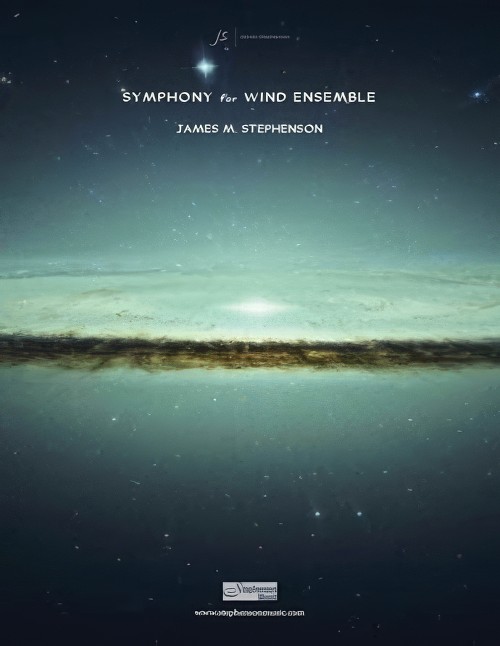 £284.99
£284.99Symphony for Wind Ensemble (Concert Band - Score and Parts) - Stephenson, James M.
The symphony is in four movements. The first movement starts a single triangle note, followed by a guitar strum. The movement anxiously attempts to churn into action, only to be stifled repeatedly by the single triangle note. Finally, with the guitar as inspiration, the main theme gets under way, revealing an almost Spanish, or even Eastern European flavor. Ideas and themes get reworked, developed, repeated and augmented throughout the movement, before finally closing out just as it began, but in reverse: this time guitar followed by triangle. The second movement steals from an angular and shrieking motif of the first, but is presented in opposite fashion: with the warm blend of the low brass. Hints of iconic military symbolism are interspersed throughout this movement, as homage to the commissioning ensemble. The main theme is inverted and awarded to a solo trumpet midway before giving way to a brass fanfare, though not done loudly, but here muted, from afar. The low brass return at the end, fading away to nothing as the bell tolls. The third movement is merely a short interlude - a break, in almost Gershwin-like fashion - from the seriousness of the movements that precede and follow. Lastly, the fourth movement is a wild one: with mixed meters and plentiful percussion penned to propel the movement throughout. The movements' themes are all reworkings of material presented earlier. Duration: 25.00
Estimated dispatch 7-14 working days
-
 £76.99
£76.99Doctor Who: Through Time and Space - Murray Gold
Composer Murray Gold has contributed a new dimension of dramatic and evocative musical themes to the long-running and iconic BBC television series Doctor Who.Spanning a period from 2005 to the present, this masterful setting for Concert Band includes familiar themes for the Doctor, along with the alien monsters Cybermen and Daleks, and also memorable companion themes for Rose and Martha. (The signature Theramin part heard on the main theme is optional, but an app for this sound is easily obtained online.)
Estimated dispatch 7-14 working days
-
£71.80
Kings Row Fanfare - Erich Wolfgang
Kings Row fanfarecontinued Erich Wolfgang Korngold's late career transition from period piece and adventure films to adult dramas whose darker tones and complex narratives, which lent themselves well to his operatic writing. Korngold was very much attracted to the psychology and complexity of this character driven drama. What resulted was one of the finest scores he ever composed, which was at once sumptuous, melodically rich, and full of heartache and nostalgia. What is remarkable is that he wrote twelve themes, one for each character, as well as numerous secondary motifs. The manner in which he weaves his themes together, varies their expression, and joins them with exquisite contrapuntal writings offers testimony to his compositional gift and mastery of his craft. In many ways Kings Row is, from a compositional standpoint, perhaps the most satisfying, and best score Korngold ever composed.
Estimated dispatch 7-14 working days
